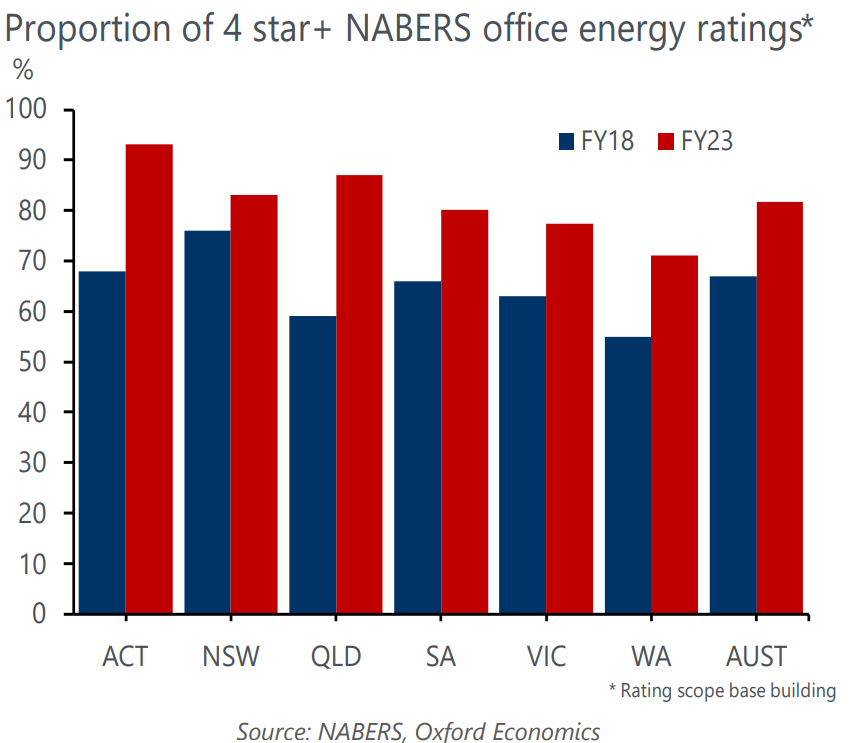Research Briefing
| Mar 1, 2024
Office sustainability outcomes underpin asset performance
As more businesses commit to carbon net zero, those who occupy office space are increasingly seeking out more environmentally friendly buildings, with higher NABERS and Green Star ratings and more sustainable features, most commonly found amongst prime stock. The focus here is because the built environment has a significant global environmental impact and is a contributor to climate change. Buildings are responsible for 40% of the world’s carbon emissions and use approximately 40% of the world’s energy and 30% of the world’s drinking water.
What you will learn:
- The focus on green office buildings and sustainability is being driven by both government targets to achieve net zero and increasing corporate and investor focus on environmental, social, and corporate governance (ESG) considerations and compliance.
- NABERS data shows the proportion of rated office buildings across Australia with highly ranked sustainability credentials (achieving a 4 star+ NABERS energy efficiency rating) increased markedly from 67% in FY18 to 82% in FY23.
- There are premiums linked to buildings that are energy efficient and have higher NABERS and Green Star ratings. This is demonstrated by the current flight to quality and reflected in higher net absorption and stronger rental growth for prime buildings compared with secondary assets.

Tags:
